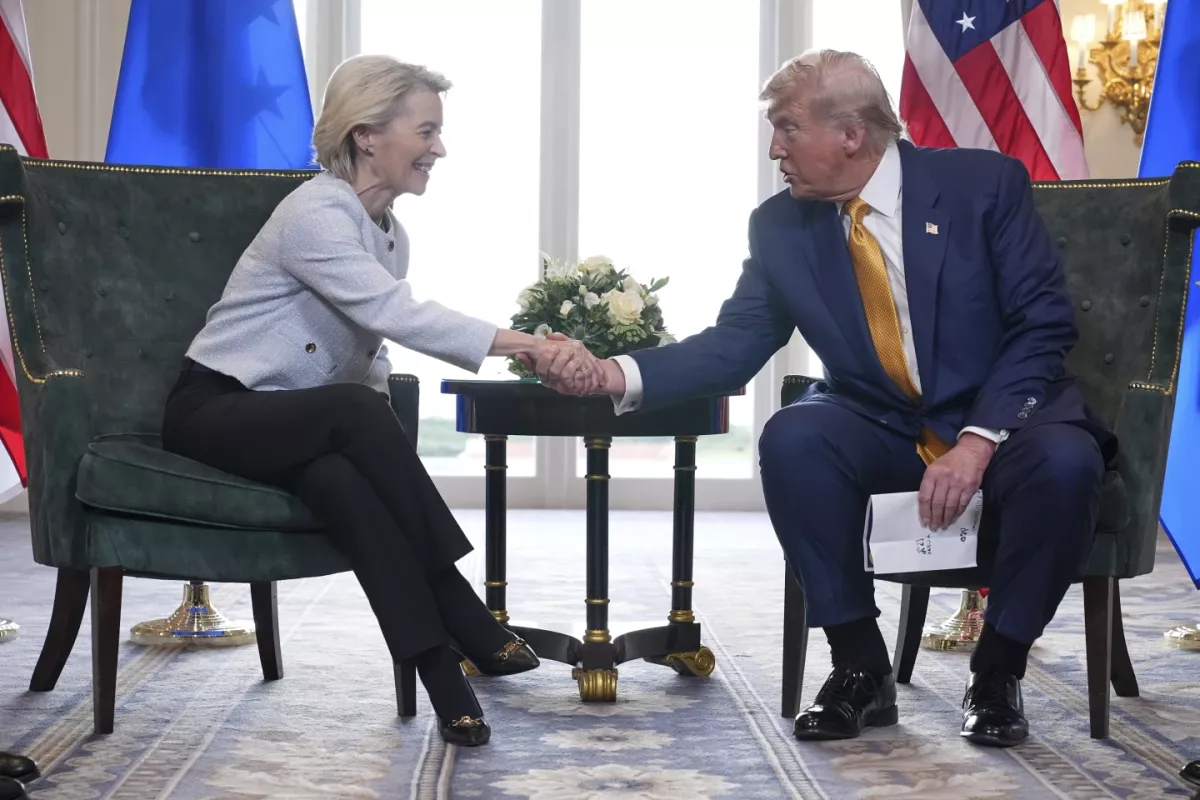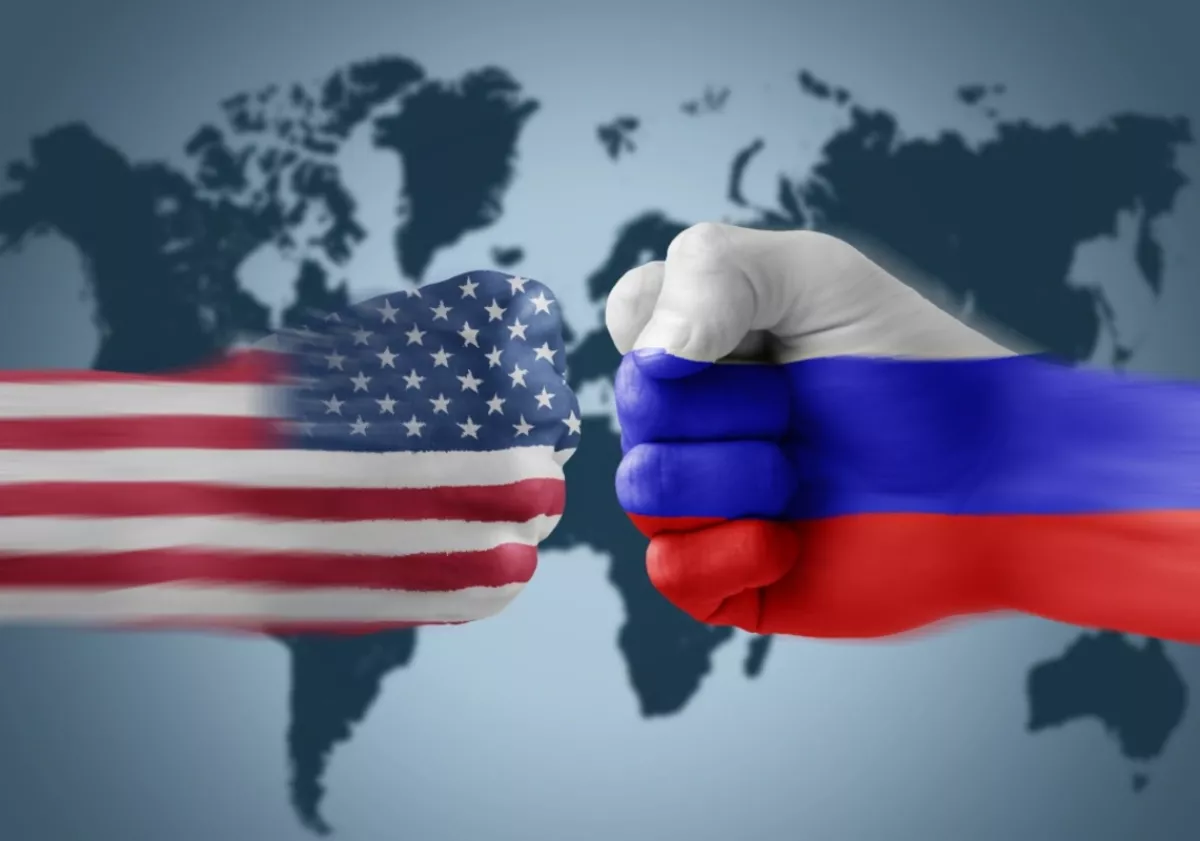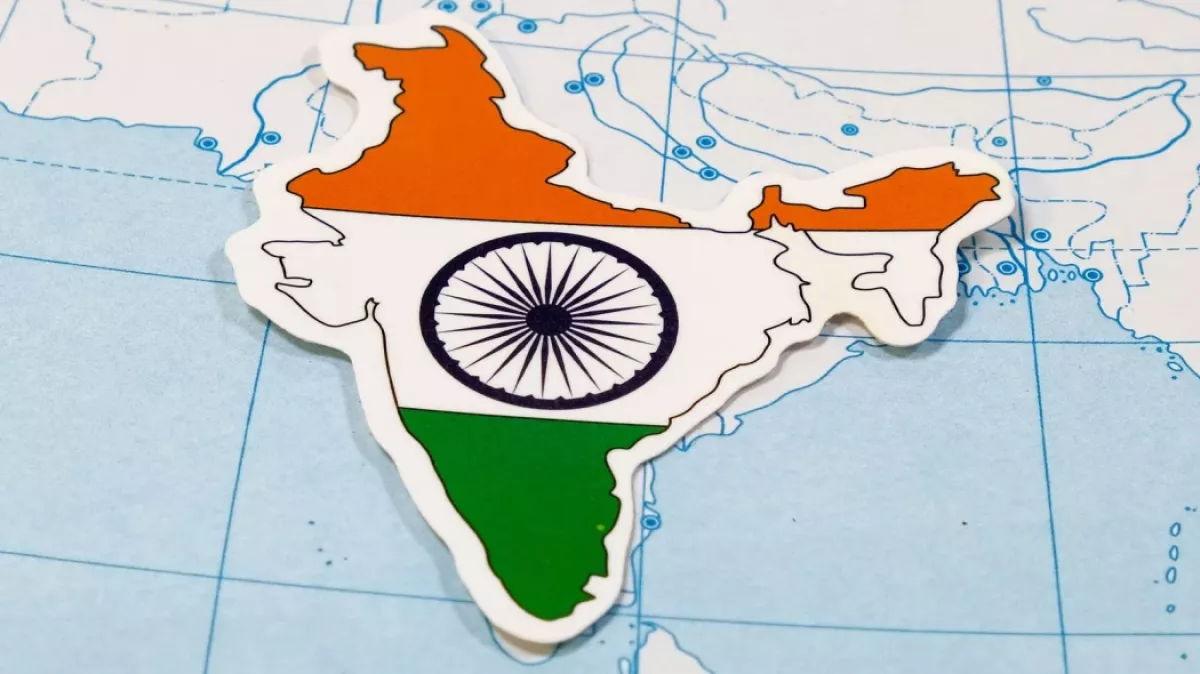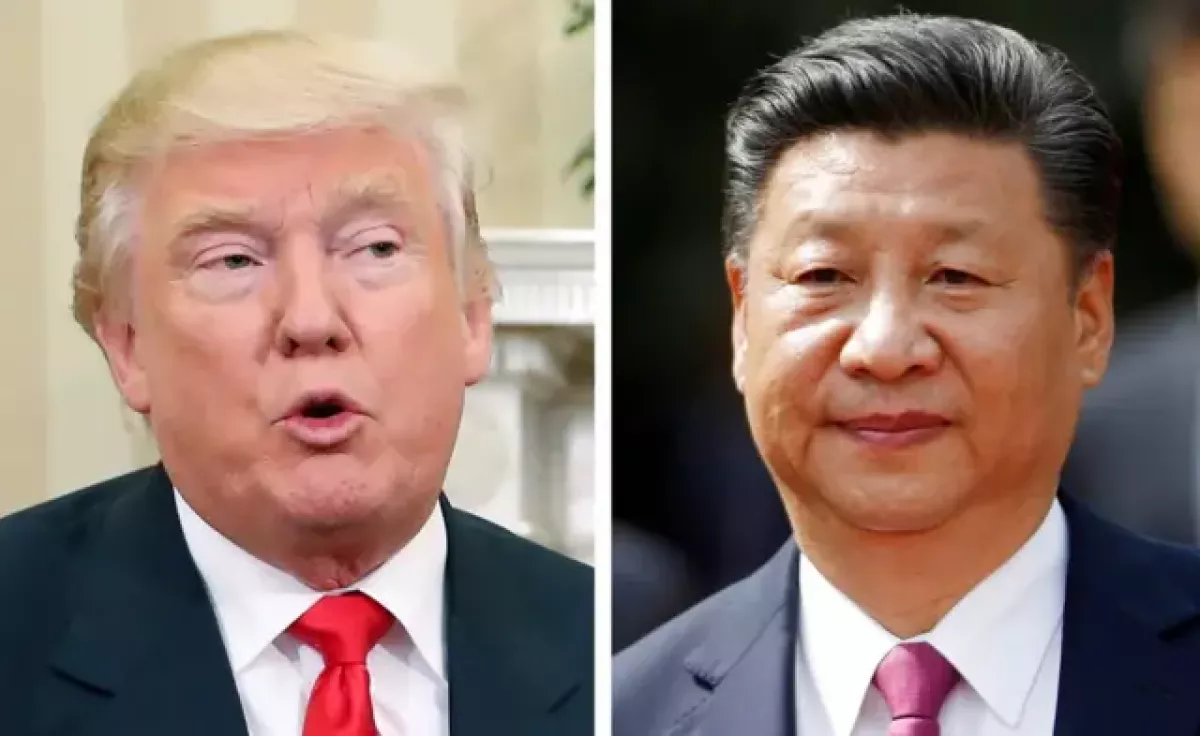US global strategy takes a U-turn against Russia Europe ready to pay any price
Last week, global politics took a dramatic turn. On Wednesday, US President Donald Trump issued an ultimatum to Russia. By Friday, he was threatening nuclear war, seizing on social media posts by former Russian President Dmitry Medvedev (!) as a pretext. Trump has thrown his weight behind the EU–NATO coalition against Russia, while simultaneously backing away from plans to pressure China. The Europeans have succeeded in convincing Trump that squeezing Russia is more important. In return, they made enormous concessions to the American leadership, going all in. The European political elites have narrowed their strategic focus to a single goal: confrontation with Russia. This explains much of the EU–NATO policy in the South Caucasus.
EU shifts industry and advanced technology across the Atlantic
The week began with highly unusual negotiations. Upon arriving in Scotland, President Trump met with European Commission President Ursula von der Leyen. No official documents were released following the meeting—not even confirmation of what was signed—though the participants outlined several specific points.

It’s quite possible that such documents, if they ever surface in full, will not emerge for a long time. The issues discussed were extremely sensitive.
The EU representative effectively capitulated to Trump. Even before the talks began, she publicly agreed with all of the US President’s arguments. And that’s exactly how it turned out: there is not a single point where Ursula managed to extract concessions from Trump. This level of acquiescence is hardly surprising, considering how European leaders have recently behaved at the NATO summit.
The stakes were high—not only at NATO (where the Europeans agreed to billions in spending, most of which will go toward contracts for the American arms industry), but also in the EU context. The head of the European Commission accepted the US side’s terms on a trade agreement featuring unprecedented provisions.
First — The EU is obliged to urgently increase its purchases of American energy resources, especially liquefied natural gas (LNG). The total value of these additional supplies over three years is expected to reach around $750 billion. This directly undermines Europe’s ambitions for an "energy transition" toward renewables and energy-efficient technologies—since such volumes will inevitably have to be consumed. It also deals a blow to the competitiveness of many European products.
Second — The EU commits to buying US nuclear fuel and weapons. This effectively halts the development of its own nuclear technologies and damages the military-industrial base of EU countries—a sector that has often provided vital technological support to civilian industries. In essence, this is a major setback for Europe’s overall technological development.
Third — The EU agrees to the introduction of 15% US tariffs on nearly all its exports to the US, while eliminating all tariffs on American imports into the EU (previously, tariffs applied to a range of US goods).
If the first point proves insufficient to push certain European goods out of the US market, these tariffs will help displace the more "resilient" ones. Although the final rate is lower than the initially proposed 30%, this hardly counts as a concession. Back in June, the EU had hoped to achieve mutual zero tariffs and viewed even 10% tariffs—like those Britain received from Trump—as unfavourable. It's worth recalling that about a decade ago, US President Barack Obama offered the EU a "Transatlantic Trade and Investment Partnership" with near-zero mutual tariffs, which the EU rejected due to its potentially harmful impact on the European economy. Now, however, confrontation with Russia has forced Brussels to retreat.
Fourth — The EU pledges to invest $600 billion into the US economy. This clause is relatively easy to fulfil. While the European Commission and national governments are unlikely to pour money directly into American industry, private businesses have already been moving across the Atlantic (though not only to the US).
The Trump–von der Leyen pact
Given this litany of concessions, it seemed strange at first that the EU representative declared the meeting with Trump a “success.” But by midweek, it began to make sense. She may indeed have been right—and the absence of a formal agreement may be due to how “successful” the outcome actually was for the EU.
The US leadership did, in fact, offer something in return to the Europeans. Given that the EU–NATO elite has recently become fixated on a single policy priority, it’s not hard to guess what the Europeans asked for—both in exchange for their NATO concessions and this broader economic capitulation: a firm US commitment not to back away from its confrontation with Russia. The EU has become so deeply entangled in this struggle that every other issue has been pushed to the background.

And Ursula von der Leyen appears to have achieved something in this regard. Not long after the meeting, Trump shortened the deadline of his ultimatum to the Kremlin. He toughened his demands for an immediate peace settlement with Ukraine, threatened to impose 100% tariffs on countries that continue to buy Russian energy, and continued to hint at other possible forms of pressure on Russia—including military options.
This ultimatum is clearly impossible to meet—and likely was never intended to be. Rather, in exchange for vast portions of the European economy, the US appears willing to consider a major global reorientation of its strategic policy.
Leaving aside the ethics—or even the rationality—of such arrangements, it’s important to recognise that geopolitical pacts of this nature are, by definition, not governed by those concerns. Formally speaking, no one came away from the meeting in Scotland short-changed. By surrendering economic ground, the EU hopes to secure America's return to a direct confrontation with Russia alongside the EU–NATO bloc. This implies, if not a full abandonment of Trump’s long-declared plans to confront China, then at least a significant delay in their implementation.
Taking this into account, it becomes clear that Washington has made major concessions of its own. The US has agreed to shift its geopolitical focus away from the Indo-Pacific and back toward the European theatre. And this pivot was no accident—signs of such a shift had been looming for weeks.
First, unlike its uncompromising stance in trade disputes with the EU—where Washington gave Europeans no leeway—its negotiations with China have been far more cautious. Trump agreed to a temporary trade truce, watched his language (while showing no such restraint with Europeans—recently telling them to shut down their wind turbines and describing India’s economy as “dead”), and temporarily allowed the continued export of certain technologies.
Second, America’s allies had already begun to sense Washington’s hesitation regarding China, even before the Trump–von der Leyen pact. In response, the Prime Minister of Australia—a key US partner in the Pacific—embarked on a six-day visit to Beijing in July.
How serious is Trump about “returning” to the game on the side of the EU–NATO alliance? There should be little doubt. Of course, one might dismiss his war of words with Medvedev on social media as mere rhetorical posturing. And critics may recall how, during his first term, Trump issued ultimatums, offered bold deals, and followed up with threats—examples being his failed overtures to North Korea and the Taliban.
But that comparison misses the mark, because the current situation is fundamentally different. First, Trump is now aligned with the EU, which has gone all-in on confronting Russia—unlike his earlier one-on-one foreign showdowns, where he lacked such coordinated backing. Second, this time there is no domestic political resistance. On the issue of standing up to Russia, there is broad bipartisan consensus in Washington. That makes it easier for the US to adopt serious, long-term strategic decisions against Moscow than on almost any other front.
For instance, just a couple of weeks ago, the US returned its tactical nuclear air bombs to British territory—ordnance that had been withdrawn in 2008. Preparations for this move began in the final months of President Biden’s term, but Trump could have halted the transfer if he had wished to. That he did not is a clear sign of intent.

A more telling example of Trump's readiness to "hit Russia" was the pressure his administration began exerting on India over its trade with the Russian Federation. And it's not just about the fact that India has become a key country buying Russian hydrocarbons and exporting products derived from Russian oil to global markets. As a giant neighbour of China, India has always played an important role in anti-China strategies pursued by external powers—more recently by the United States, and in earlier times by the USSR. But for now, it is not needed in that role.
What Europeans perhaps fear most is that Trump could be distracted from the European conflict by other concerns. Chief among them is the Middle East—especially in light of new initiatives by the Israeli leadership, such as the potential annexation of the West Bank. As a result, European countries have begun pressuring Israel, threatening it with the recognition of a Palestinian state or even sanctions, demanding that it abandon its current course, fearing it could once again trigger a confrontation between Israel and Iran or the Houthis.
Prospects for peace and the South Caucasus
On a global scale, the existential nature that European elites have assigned to their confrontation with Russia creates a diametrically opposite situation for Western players. Although the price offered by Euro-liberals to the American leadership for its involvement in the conflict clearly points to an existential understanding of the situation, what exactly does the EU hope to achieve in the end?
The situation appears hopeless for the Europeans — a "lose-lose" scenario. Even if we hypothetically assume that everything goes according to the wishes of EU–NATO leaders — for instance, that Ukraine defeats Russia with their and America's support — and that reparations and access to Russian resources on new terms could supposedly offset the costs of such a war, the main spoils of this fantastical victory would go to the United States, not the EU. Pakistan once helped the West defeat the USSR in Afghanistan, but in return, it received only a ruined Afghanistan and millions of refugees.
And it seems that the EU is underestimating Russia’s strength. It’s very easy to do so. Indeed, after Russia recently celebrated the capture of Chasiv Yar — a completely destroyed town with no strategic value and a pre-war population of fewer than 17,000 — one can point out that over the past two years, Russian forces have advanced just 10 kilometres from Bakhmut, which they captured in May 2023, even along the Donbas front. There are also vivid examples of supposed economic troubles in Russia — for instance, at the end of July, KAMAZ and AvtoVAZ switched to a four-day workweek.
But in reality, Russia is fighting without mobilisation and without noticeable strain on its forces. The ruble is stronger than ever after the opportunities for capital flight disappeared and the government stopped funnelling resources into Western banks, where they lay dead weight. External debt is at an unprecedented historic low, and except for the border regions, life in Russia goes on as usual. The problems caused by the war are felt both in Russia and in Western Europe. In other words, Europe confuses Russian chaos with Russian weakness, hoping to "crush" Moscow with the help of the US and Trump.
The US is in a "win-win" situation
Trump has already obtained from the Europeans the decisions he needed, regardless of the outcome of the war in Eastern Europe. Its continuation and escalation cement the EU’s exclusion from the ranks of global competitors of the US. However, there is another aspect — China, which continues to grow stronger — but in the current crisis affecting all Western countries, there is little room for such strategic thinking: almost all Western leaders are overwhelmed by everyday problems.

Back in June, Trump accepted an invitation from Chinese President Xi Jinping to visit China and promised to come “at some point.” Just recently, he reaffirmed that he might make the trip. Compared to the EU, the United States suffers less from ideological tunnel vision and is more open to engaging with any opponents.
In conclusion, it should be noted that the current global shifts will also have consequences for the South Caucasus.
First, the EU’s fixation on the Russia issue reduces its capacity to engage with any other topics, even though these topics may be “folded” into the confrontation with Russia.
Second, new commitments to the US eliminate the possibility of serious energy purchases by EU countries elsewhere. This explains their minimal efforts to build energy supply schemes from the Caspian and Central Asia. An example of this is the delay in modernising the pipeline network, which President Aliyev mentioned. More likely, American companies might get involved in such energy purchases outside the US and then resell them to Europeans — rumours about a possible US-led restart of Russia’s “Nord Stream” pipelines did not emerge out of nowhere; a similar scheme could be developed on other routes. This means the significance of the US in the region’s politics is growing, while that of the EU is declining.
Third, the EU is overloaded with tasks related to confronting Russia and is not seriously interested either in relations with China, which would require routes through the Caspian, or in a large-scale positive agenda regarding the post-Soviet states, including the vast Central Asian region. A recent example is Ursula von der Leyen’s meeting with Chinese leaders, where her tough stance reduced the planned summit programme to just one day. This means the EU is unlikely to engage soon in building transit routes through the South Caucasus.
This should not be seen as a problem — rather, it is an opportunity for the South Caucasus, primarily Azerbaijan and Georgia, to shape the region on their own terms and integrate it into the new global system also on their own terms.








